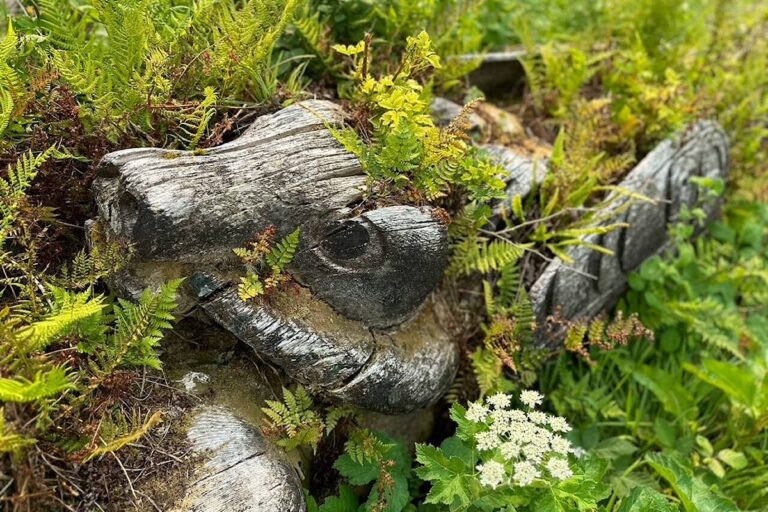Matteo Cimeraro, Local Journalism Initiative Reporter, Canada’s National Observer
In 2018, Joe Bailey was running a successful tourism business treating guests to the vibrant lights of the Northern Lights, but the COVID-19 pandemic put the Northwest Territories into lockdown.
The area was cut off from the world for two years, and Bailey’s company, Northstar Adventures, had no income other than government funding.
His company received some grant funding from the federal government, but the territorial government waited more than a year to distribute the money to struggling businesses.
Four years later, Bailey has had to sell almost all of his assets, including five vans and 12 snowmobiles, and business is expected to slow for the time being. After the pandemic subsided, the once-thriving adventure company was left with just one van. But now, domestic tourists are returning to see the Northern Lights.
“We’re in rebuild mode and the touring season is very slow,” Bailey said, “so we’re definitely nowhere near pre-COVID numbers, but it has forced us to be smarter about our business decisions and business practices.”
Internal documents obtained by Canada’s National Observer through freedom of information laws show that Indigenous tourism businesses faced barriers to accessing government assistance related to the pandemic, even though they suffered “disproportionately adverse effects” from travel restrictions and economic disruption at the time.
Internal documents from Canada’s Department of Innovation, Science and Economic Development reveal that Indigenous tourism has faced challenges even as Ottawa praised pandemic-era aid for businesses as a “powerful tool” in Canada’s reconciliation efforts.
Pandemic statistics show that Indigenous tourism has been hit harder than other industries. According to ITAC figures cited in the internal document, the Indigenous tourism industry is estimated to have directly suffered a 65.9% GDP decline and a 59.4% employment decline in 2020 due to the pandemic. By comparison, tourism’s overall GDP fell 50.1% and total employment fell 21.1% in the same year.
According to internal documents, Native American tourism businesses had difficulty meeting financial requirements for federal programs and faced challenges with program application and eligibility requirements that could unfairly exclude Native American businesses, such as unincorporated, community-owned, tax-exempt businesses.
Bailey also points out the contradictions between Indigenous and non-Indigenous businesses.
For example, Indigenous businesses need more specialised support to enter the industry, Bailey explained.
“Indigenous entrepreneurs are at a disadvantage,” Bailey said, “so start-up funding and programs would go a long way to helping Indigenous tourism grow and succeed in Canada.”
Keith Henry, president and CEO of the Indigenous Tourism Association of Canada (ITAC), said tourism across Canada has been devastated during the pandemic, but Indigenous businesses have been “hit the hardest.”
Operations in rural and remote areas were smaller in scale and less accessible, making indigenous operations particularly vulnerable.
Darcy Garderas, director and customer strategy for Tansi Tourism Solutions, often works one-on-one with Indigenous tour operators. She was on a conference call with another Indigenous business owner in the Northwest Territories, who hadn’t made it through the pandemic even at its peak.
“He wants to go back to work because it’s his passion, but they need more support,” Guarderas said, noting that many operators are leaving the industry in search of more stable work.
“For small businesses that don’t have a lot of capital, the pandemic has really devastated them,” she told Canada’s National Observer.
A 2021 survey by Destination Canada found that one in three international travelers expressed an interest in Indigenous tourism, and travel magazines have also cited Indigenous tourism as a trend for 2023, according to internal documents.
“The World Travel and Tourism Council currently projects travel and tourism GDP to grow more than twice as fast as the overall economy, with the sector forecast to enter a decade of strong growth globally,” the document said.
Bailey’s business used to cater almost exclusively to international visitors who came to see the Northern Lights, but now Yellowknife is seeing an increase in domestic tourists, while international visitors are also starting to pick up.
But this wasn’t just about the pandemic: the document found there was “evidence of a gap in international travellers’ perceptions of the attractiveness of Indigenous tourism in Canada.”
Henry isn’t surprised, and argues Ottawa hasn’t meaningfully invested in the industry.
“At the end of the day, we just don’t have the investment structure in place to continue to really capitalize on the potential that’s there,” he said. “It requires marketing and development, and that’s not happening in our industry yet.”
For example, Guardaras points to airports as the “starting point” for raising awareness of Indigenous tourism, but only Vancouver, Winnipeg and Edmonton properly inform visitors that they’re arriving on Indigenous territory — not other provinces.
Henry argues development and marketing require “real investment” in Indigenous tourism from federal and provincial governments and the larger tourism sector.
“I don’t want to hear any more lip service,” he said.
In a statement to Canada’s National Observer newspaper, Alexander Cohen, a spokesman for Tourism Minister Soraya Martinez Ferrada, acknowledged that Indigenous tourism has the power to promote reconciliation and self-determination.
“That is why one of our top priorities is working closely with First Nations leaders to support the growth of Indigenous tourism,” the statement added. “It is important to emphasize that communities make their own decisions and run their own tourism businesses at their own pace, and we must respect that.”
Related article: Indigenous tourism slow to recover from pandemic, report finds
Related article: Indigenous tourism plays key role in promoting the island’s 50 indigenous groups

